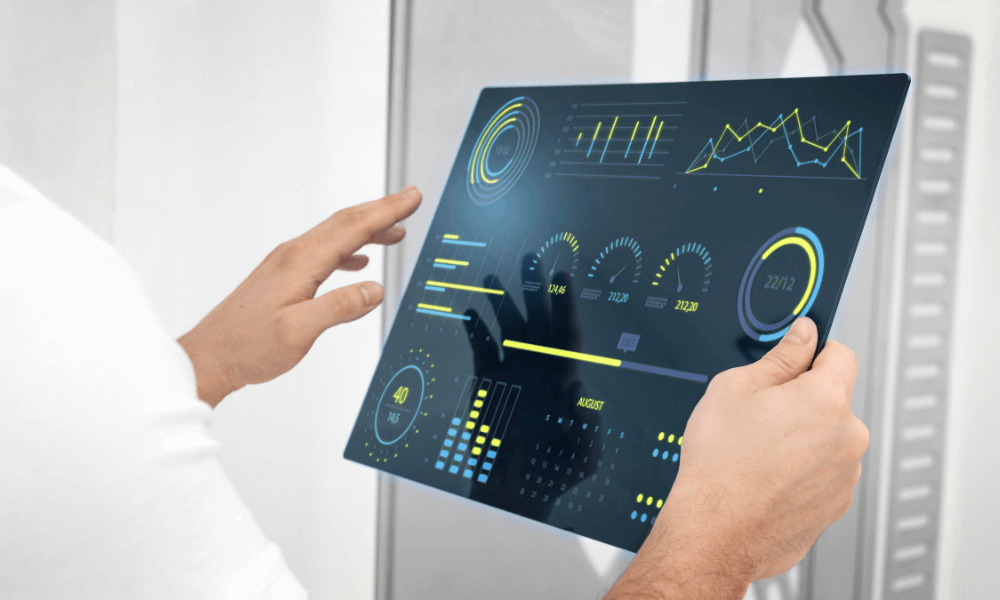
The Role of IoT in Optimizing Energy Consumption
The global energy sector is facing a number of challenges, including increasing demand, rising costs, and environmental concerns. As a result, there is a growing need for innovative solutions to improve energy efficiency. The Internet of Things (IoT) is one of the most promising technologies for addressing these challenges.
IoT is a network of physical objects that are embedded with sensors, software, and other technologies that enable them to connect and exchange data. This data can be used to monitor and control energy usage in real-time.
In an era defined by technological innovation and a growing awareness of environmental sustainability, the Internet of Things (IoT) has emerged as a key player in transforming the landscape of energy consumption. The integration of IoT in various sectors has paved the way for smarter, more efficient solutions, and its role in optimizing energy consumption is becoming increasingly prominent.
Understanding IoT and Energy Optimization
At its core, IoT involves connecting devices and systems through the internet to enable them to communicate and share data in real-time. When applied to energy systems, IoT allows for the creation of smart grids, intelligent sensors, and data analytics tools that work in tandem to optimize energy consumption.
Smart Grids: The Backbone of IoT in Energy
Smart grids represent one of the most significant applications of IoT in the energy sector. These interconnected systems leverage advanced sensors, meters, and communication networks to gather and analyze data related to energy production, distribution, and consumption. With this wealth of information, utilities can make informed decisions in real-time, balancing the demand and supply of energy more effectively.
Applications Across Industries
The impact of IoT on energy optimization extends beyond the utility sector, reaching industries such as manufacturing, transportation, and healthcare.
Manufacturing Efficiency
In manufacturing, IoT-enabled sensors can monitor energy usage on the production floor, identifying areas of inefficiency and recommending improvements. This level of granular insight allows companies to make data-driven decisions, reducing waste and overall energy consumption.
Intelligent Transportation Systems
In the transportation sector, IoT plays a crucial role in optimizing fuel consumption and reducing emissions. Smart traffic management systems use real-time data from sensors and connected vehicles to optimize traffic flow, minimizing idling time and fuel waste.
Healthcare and Sustainable Facilities
In healthcare, IoT contributes to energy optimization by ensuring the efficient operation of medical equipment and facilities. Smart building technologies, powered by IoT, regulate lighting, heating, and cooling systems based on occupancy and usage patterns, resulting in significant energy savings.
Building Smart Cities
The concept of smart cities, driven by IoT technologies, envisions urban environments that leverage data and connectivity to enhance the quality of life for citizens while minimizing environmental impact. Energy-efficient street lighting, waste management systems, and intelligent transportation networks are just a few examples of how IoT contributes to the creation of sustainable and interconnected urban spaces.
Challenges and Future Outlook
While the potential of IoT in optimizing energy consumption is immense, challenges such as cybersecurity, interoperability, and data privacy must be addressed. As technology continues to evolve, stakeholders must work collaboratively to establish robust standards and frameworks.
Looking ahead, the integration of artificial intelligence (AI) and machine learning (ML) with IoT is poised to unlock even greater possibilities in energy optimization. Predictive analytics and adaptive systems will play a crucial role in anticipating energy demand, optimizing consumption, and ultimately creating a more sustainable future.
Conclusion
The marriage of IoT and energy optimization is reshaping the way we think about and manage our energy resources. From smart grids and manufacturing processes to healthcare facilities and smart cities, the applications of IoT in energy are diverse and promising. As technology continues to advance, embracing the potential of IoT in energy consumption is not just a choice; it is a pathway to a greener, more sustainable future.